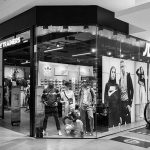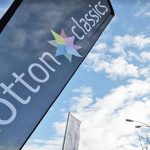Shares of Billabong climbed 23 percent after the company disclosed that Boardriders Inc., formerly known as Quiksilver Inc., had made an offer to acquire the company. Billabong indicated that its board will evaluate the proposal.
Boardriders, through its Los-Angeles-based controlling fund, Oaktree Capital Management, already owns 19 percent of Billabong. Oaktree is also one of Billabong’s two senior lenders. In 2013, Billabong accepted a financial rescue package worth more than U.S. $500 million to be provided by the private equity groups Centerbridge Partners and Oaktree Capital. Centerbridge and Oaktree received a 34 percent stake in Billabong in the deal.
Billabong’s core brands are Billabong, RVCA and Element while its secondary brands are Kustom, Palmers, Honolua, Xcel and Von Zipper.
After declaring bankruptcy in 2015, Quiksilver Inc. restructured and became a private company with the help of Oaktree. Quiksilver also owns Roxy and DC shoes.
Under the terms of the deal, all of the shares in Billabong, other than those already owned by Boardriders’ related entities, would be acquired at a price of Australian $1.00 (76 cents) in cash per share. The deal is values Billabong at Australian $198 million (U.S. $150 million).
In 2012, Billabong rejected a takeover bid worth more than four times the current offer.
Billabong said its board had decided to grant due diligence access to Boardriders to enable Boardriders to put a formal proposal to Billabong. That process is likely to take a number of weeks.
In 2013, Billabong embarked on a restructuring plan that called for a streamlining of its business from a regional to a global focus, a focus on its three primary brands, as well as an emphasis on digital engagement with its younger consumer base. But the payback has been slow and recent strength in the Americas and Europe have been offset by weakness in its home market in Australia.
Billabong suffered a Australian $77.1 million loss in its fiscal year ended June 30 against a loss of Australian $23.1 million a year ago. It has only posted a profit once in the last five years.
The loss in the latest year ended June 30, 2017 came after an impairment charge related to the difference between the company’s share price and the carrying value of its net assets.
Group EBITDA of Australian $51.1 million was up 2.8 percent on a currency-neutral basis and 0.3 percent as reported. EBITDA was less than a million dollars below the guidance range provided in November and affirmed again in February, allowing for the sale of Tigerlily. If not for the widely reported weak retail conditions in Australia, EBITDA would have been “well up in the range,” said Billabong.
In the Americas, revenues for the year declined 10.1 percent in the year to Australian $432.9 million and were down 7.5 percent on a currency-neutral basis. EBITDA jumped 46.9 percent prior to global allocations.
Among its brands, Billabong continues to hold its own in a challenging surf market. At its annual meeting held on November 17, Fiske noted that in every year since 2014, the Billabong brand has widened its number one share position in the core market. Billabong now has twice the share of its nearest competitor in the U.S., according to independent industry research from ActionWatch.
Fiske said RVCA, with broad appeal across a number of action sports youth subcultures from art to surf to skate and mixed martial arts, has the potential to expand two to three times its current size.
“On every dimension of what we call the growth cube – channels, geographies, and categories – there is ample opportunity ahead,” said Fiske. “Men’s, Women’s, and Kids. Categories like RVCA sport and accessories, which are just getting going. Geographic expansion in APAC, Europe, Brazil and emerging markets.”
Element, marking its 25th anniversary in 2017, saw a leadership change last year. Europe is currently the biggest market for the skateboarding brand with U.S. being prioritized for growth.
Photo courtesy RVCA
















